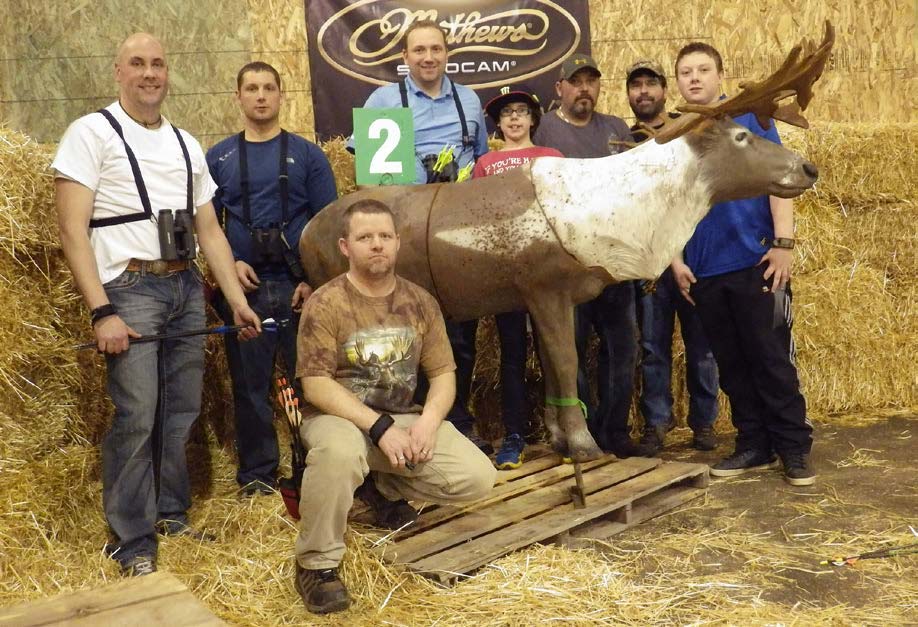It’s a Fun Way to Sharpen Your Bowhunting Skills During the Winter Months
The wait time between fall hunting seasons is a long period to go without shooting your bow, especially when you want to keep your archery skills sharp. So, what to do? I suggest that you try your hand at an indoor 3D archery competition.
A welcome change from shooting paper targets, these simulated hunts offer a great way to stay in practice and help retain muscle memory and form over the winter months as you prepare for an upcoming hunt. They’re also a fun excuse to get together with your bowhunting buddies and to meet others who are likewise passionate about the sport.
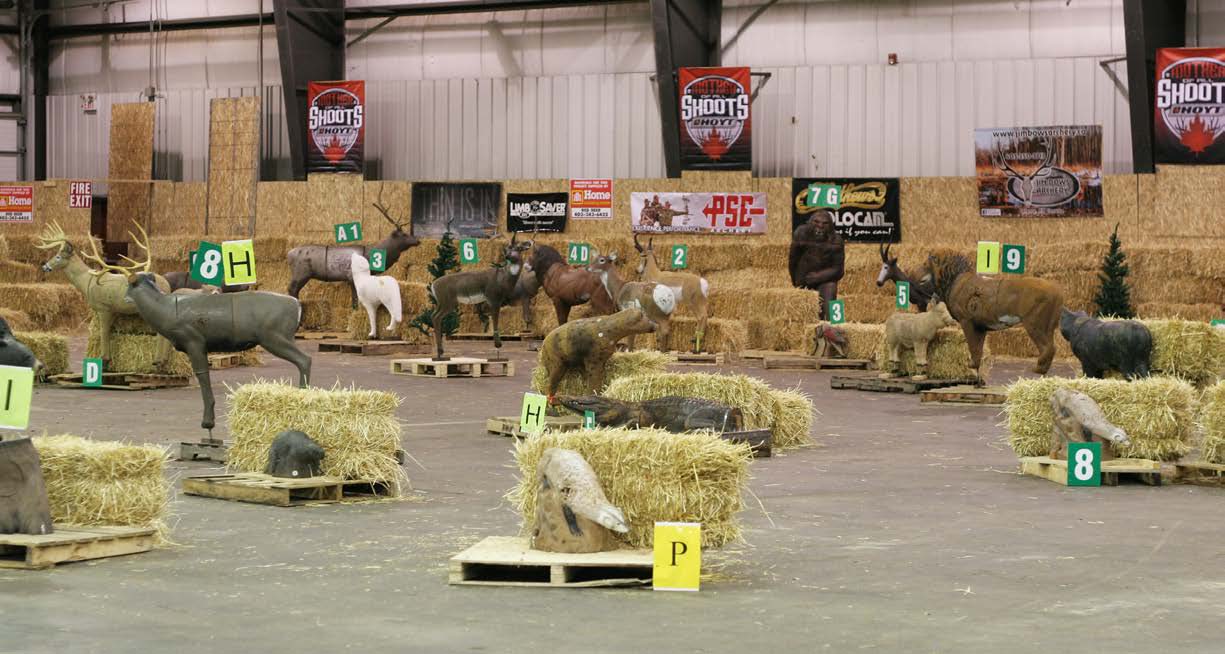
Since its inception, 3D archery has evolved into a sport of its own, with rules, scoring, and a plethora of targets you would never find in the field. Whether you are competing, or if you’re just keeping the rust off during the winter months, 3D archery shoots are a ton of fun. They’re also a great way to expose children to archery. I take my children to many shoots. They really enjoy shooting all the different targets—including a moving fish this past summer at an outdoor shoot.
The Gear

You don’t need specialized equipment to get into 3D shooting. I use my normal hunting set-up (bow, arrows, and release), minus my bow quiver. Most shooters sport a hip quiver, which offers a convenient place to nock your arrows as well as to hold a few spares. Many hip quivers are large and are complete with pockets and hooks to carry additional nice-to-have items.
You’ll only need to have field points on hand since broadheads aren’t allowed in 3D competitions. Today’s hunting bows shoot at incredible speeds, making arrows— especially small-diameter carbon models—penetrate deeply. With that in mind, coat your arrow tip and the front six inches of the shaft with lubricant. This helps them pull out of the foam targets more easily. A good Do- It-Yourself solution is to bring a small bottle of partially diluted dish soap. Be sure to carry a small hand towel to keep your hands dry and clean so you can shoot your best and help pull arrows with ease. To avoid blisters and sore hands, be sure to use a rubber arrow puller. Some targets, depending on their age and brand, combined with different arrow finishes, prove difficult when trying to retrieve arrows.
I also recommend bringing binoculars to help find your precise aiming point. A foldable, two-legged kickstand is a good idea, too. It quickly clamps onto your bow’s lower limb so you can store the bow vertically and away from the crowded racks when you retrieve your arrows. Some hip quivers even have a special pocket to hold the kickstand.
Be sure that your bow is tuned before you enter a competition. A tuned bow will make all the difference in consistency, and you can simply focus on shot execution and remove the mental anguish of having improperly calibrated equipment toy with your mind. As for tools and spare equipment, I like to carry these items, since they can help you and someone else get back into the game: a spare D-loop, Allen keys, a bow toolkit, six additional arrows, and string wax. For outdoor shoots, I also am sure to have sunscreen, sunglasses, mosquito repellent (or thermacell — because these buzzers can mess up your shot), and a collapsible chair to use while waiting to shoot.
Shoots usually last one to two hours for a single round, and there may be three to four rounds on a weekend. Comfortable clothing, solid footwear, and a full water bottle are essential, as well.
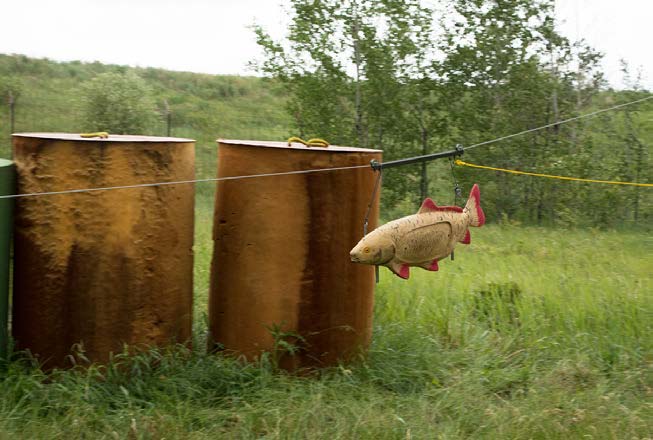
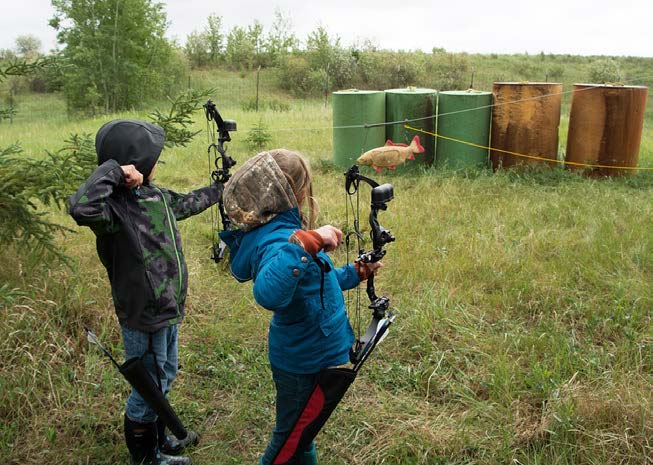
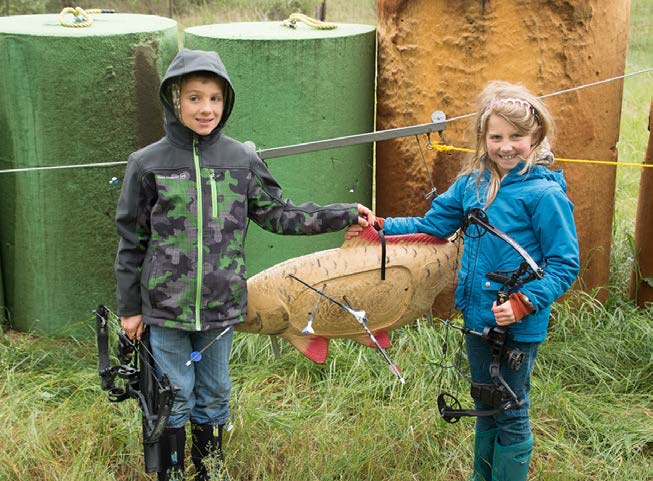
The Game
The competition involves shooting at various life- sized, high-density foam animal targets. Designed specifically for these competitions, the targets include common North American and African game animals. You’ll also draw on some fun objects, such as giant mosquitoes, dinosaurs, and Bigfoot. Non- competitive fun shoots have moving and arrow- destroying steel targets.
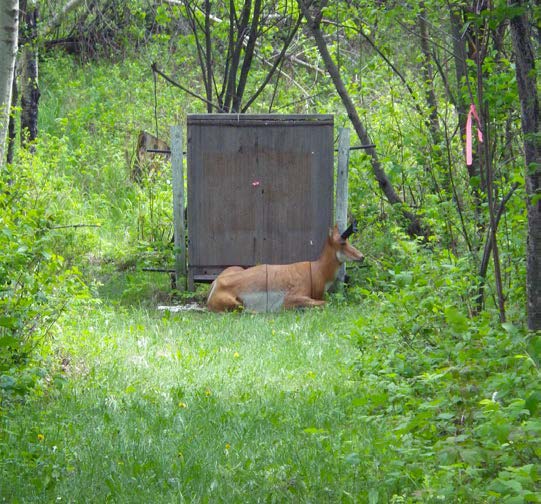
Intended for a mix of archers and bowhunters of all ages, each competition offers a class solely for fixed-sight hunting bow set-ups. There are also traditional classes for recurves and longbows.
A typical shoot consists of one to three rounds across 10 different stations, with each competitor taking three different shots from each station. Groups of shooters move from station to station until all arrows have been released, each at a different target from varying distances and angles.
Shots can be diagonal, straight, or over other objects, ranging in distance from 15 to 40 meters for compounds and 5 to 20 meters for traditional and youth shooters. Regardless of the shot distance, angle, or order, the scoring zone on each target is clearly visible from the station. Each competitor must personally estimate the shot distance.
When competing, I recommend concentrating on one shot at a time—just like picking out a single hair while hunting. The whole group gets three to four min- utes in total to shoot. To avoid wasting time, don’t glass targets when it’s your turn. Instead, step back and let others shoot while you glass your next target. Range- finders have traditionally been banned, but some shoots now offer a rangefinder class. This removes estimation from the duties of the shooter, simply focusing on execution to score.

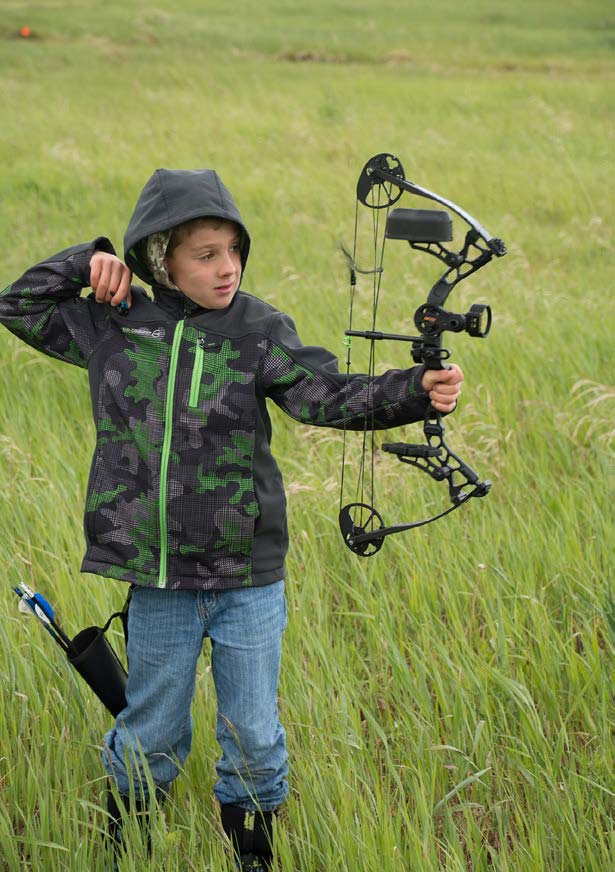
The Scoring
After everyone has finished shooting and an “All Clear” has been announced, competitors walk to retrieve their arrows from the targets and tally up their own scores before proceeding to the next station. If you have time, be sure to have a good look at the next targets you’ll be shooting and look for small aiming spots to assist you. Look for things like a worn-out target spot, texture differences, and ridges.
You can usually see these with your binoculars, but it’s nice to visualize where you want the arrow to hit.
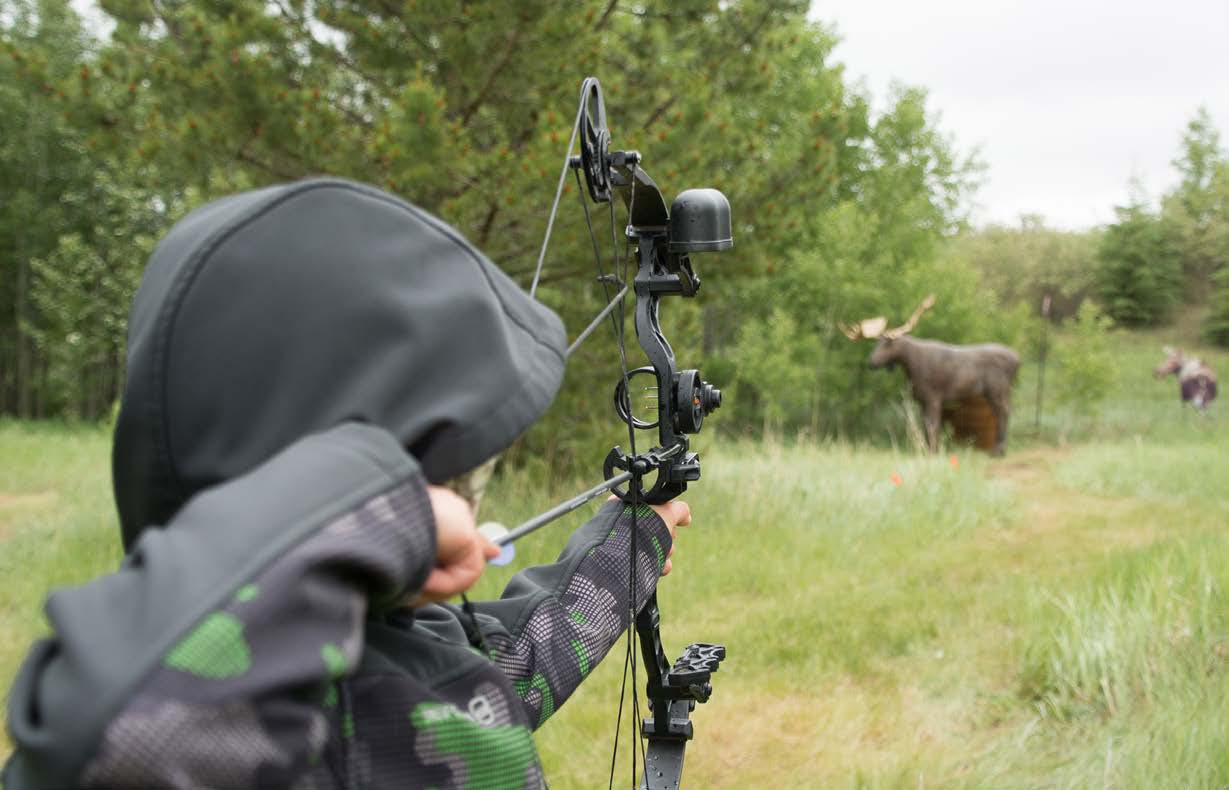
All 3D targets feature the same scoring system: 11 points for a small bull’s-eye in the prime spot; 10 points for the next largest circle (a heart/lung shot); 8 points for any arrow embedded in the vitals region; 5 points if the target is hit anywhere else; and 0 points for a clean miss.
Competition aside, 3D indoor archery shoots offer an excellent opportunity to fire many arrows in a semi- realistic environment. These events also help you get ready for the real deal once the next fall hunting season finally rolls around.

If you decide to get serious and really compete, you’ll want to familiarize yourself with the different completing classes and the equipment restrictions that go along with them. Each club or shoot, regardless of shooting class, will have local rules. Be sure to obey them. They will be listed somewhere, but be assured, these will be a subset of everything you learned in kindergarten.
The Seasons
In North America, the 3D archery season is composed of two seasons: indoor and outdoor. Indoor runs from January to April, with a national championship tournament held in a different city each year. The maximum shot distance for indoor shoots is under 40 meters. Shooters all shoot from the same line with the possibility of mid-air arrow collisions.
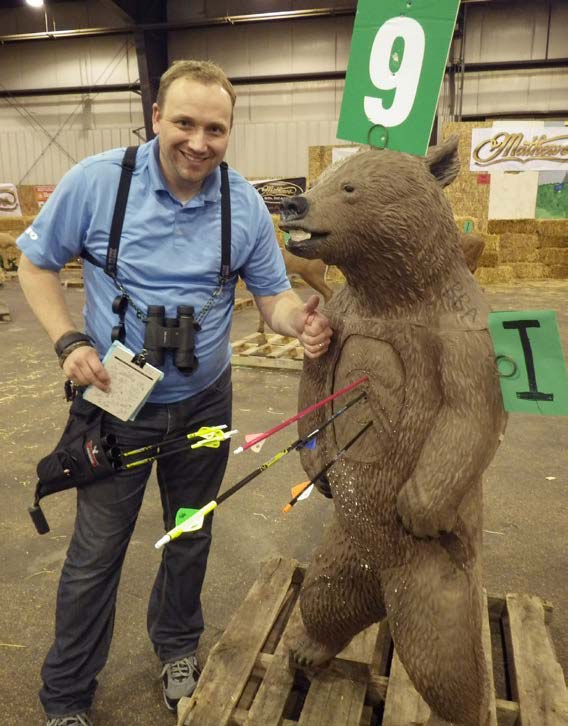
When the weather turns nice, the outdoor season begins. It runs from May to August. I have seen some very challenging course setups, with shots through windows of bush, across valleys, up hills, and out to 50 meters. Outdoor courses are usually set up like golf courses, with competitors walking from shooting station to shooting station. Some shoots get extreme, such as the total archery challenge sponsored by Bear Archery. It is set up at various skill levels across the continent, and it offers long and steep shots at most stations.
Pro Timing Tip: Three to four minutes is plenty of time for your entire group to shoot. So that you don’t waste time, don’t glass targets while at the shooting line. Use that time to aim and shoot only. Step back to glass, and let others shoot while you study your next target. Don’t rush your shots. It’s common that the shooting line marshal stops the clock early if all groups have finished their stations.
So, remember this: Have fun and get rid of those bad shooting habits—on foam— before Opening Day.
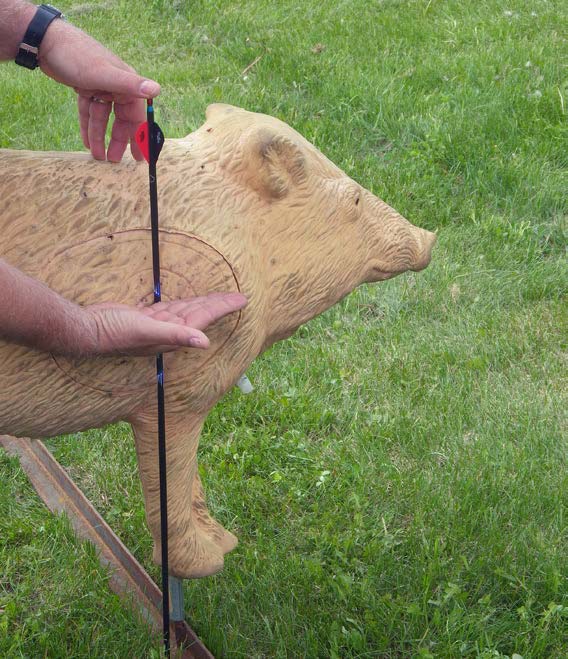
Per our affiliate disclosure, we may earn revenue from the products available on this page. To learn more about how we test gear, click here.





